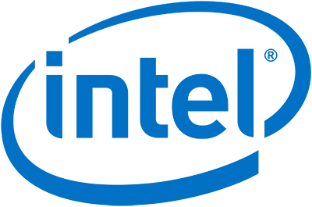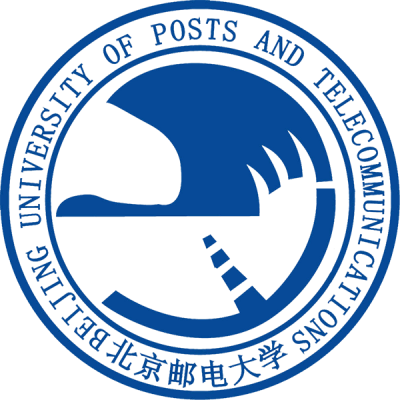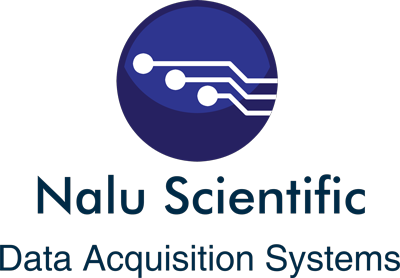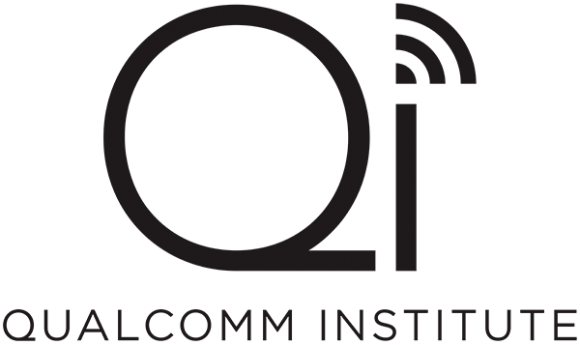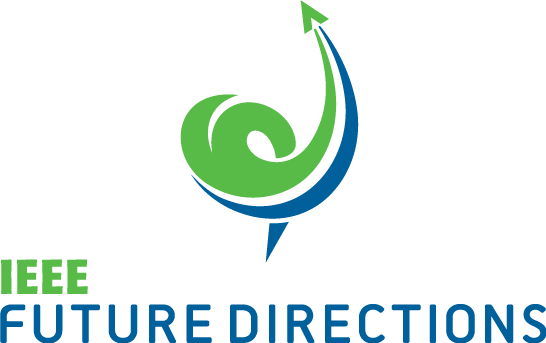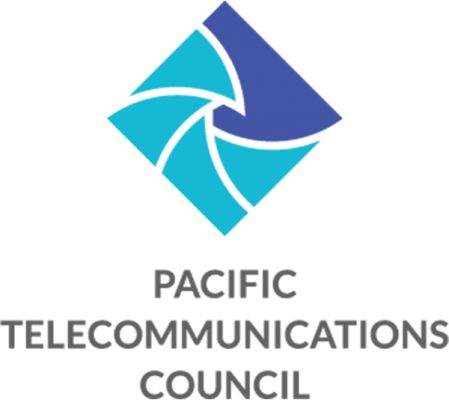Back to Industry Program Page >>
Tuesday, 10 December 2019
11:00-12:30, 14:00-15:30
Industry Panel 2 & 3 (IP-02, IP-03): Roadmapping Communications Technologies
14:00-15:30
Industry Panel 1 (IP-01): Evolving Internet Business Models
16:00-17:00
Industry Panel 4 (IP-04): 5G Verticals: Technologies, Challenges and Opportunities
17:00-17:45
Industry Panel 5 (IP-05): Becoming an IEEE Fellow - Why, When and How
Wednesday, 11 December 2019
08:45-10:30
Industry Panel 6 (IP-06): Disruptive Technologies Towards the Smart City
16:00-17:45
Industry Panel 7 (IP-07): Driving Data to the Edge - Challenges and Solutions in Automotive Edge Computing
16:00-17:00
Industry Panel 8 (IP-08): Intelligent Fog Computing & Networking
17:00-17:45
Industry Panel 9 (IP-09): Towards Ubiquitous Connectivity in the 5G and 6G Era
Thursday, 12 December 2019
08:45-10:30
Industry Panel 10 (IP-10): IP Portfolio Strategies in the US, Asia and Europe
14:00 - 15:30
Industry Panel 13 (IP-13): Digital Transformation: Opportunities, Challenges and Standardization
16:00-17:00
Industry Panel 11 (IP-11): Rules of Engagement at Stratospheric Bands
Industry Panel 1 (IP-01): Evolving Internet Business Models
Date/Time: 10 December 2019, Tuesday: 14:00 – 15:30
Room: Hilton, Kona 5
Organizer:
- Prof. Debasis Mitra, Columbia University, USA
Panelists:
- Daniel Gicklhorn, Principal Product Lead, Azure, Microsoft
- Sanjay Kamat, Lead, Macroeconomic Research at Bell Labs Consulting, Nokia Bell Labs
- Edward G. Tiedemann, Jr., Senior Vice President of Engineering at Qualcomm, Qualcomm Fellow
- Eric Burger, CTO at FCC, 2017-2019; Research Professor, Georgetown University
- Sanjoy Paul, Vice President & Global Digital Head, Manufacturing, Wipro Ltd
Abstract: Technological innovations have a way of disrupting the industry framework and, in time, the lives and practices of citizens. The goal of the panel is to highlight a selection of current tectonic movements in the communications industry, all enabled in some way or another by the Internet, and explore their impact on the industry and its business. The selections include cloud computing, 5G and AI. The panel is mindful of the business of nurturing R&D, in industry and academia. The panel is similarly mindful of the historically large role played by regulation in the communications industry, and is interested in the evolution of the regulator’s role.
The panel brings together leading experts in the afore-mentioned areas: cloud platforms and services; the symbiotic relationship between economics and technology in the 5G ecosystem; funding of R&D in the cellular industry; the regulator’s perspective on the evolution of the communications technologies, and, specifically, the regulator’s role in bringing together industry, academia and government.
Industry Panel 2 & 3 (IP-02, IP-03): Roadmapping Communications Technologies
Date/Time: 10 December 2019, Tuesday: 11:00 – 12:30; 14:00-15:30
Room: Hilton, Kona 4
Organizers:
- Peter Winzer, Head Optical Network Research, Nokia Bell Labs, Holmdel, NJ, USA
- Bill Tonti, IEEE
- Xiang Liu, Head Optical Access Networks Research, Futurewei Technologies, USA
- Rudi Schubert, IEEE
Panelists: To be provided
Abstract: Various industry roadmapping efforts exist today for communications technologies and related device/subsystem technologies. These are typically (and naturally) charting the evolution of their respective sub-fields in great detail, but run the risk of missing important cross-disciplinary opportunities arising both from anticipated roadblocks and from emerging breakthroughs in other fields. A good example is the implicit assumption of CMOS roadmaps that some transmission technology (electrical or optical) will be available to support the ever-growing I/O capacities of high-end processors, which however may not be the case at the hoped-for interface rates. Conversely, optical networking roadmaps implicitly assume a continuing long-term growth of CMOS processing capabilities and of solid-state storage technologies when extrapolating the needs for future network architectures and transmission technologies.
This industry panel aims at bringing together a variety of industry visionaries and roadmapping experts to explore, on a 10-year horizon, the scaling of digital applications, communications network solutions, and enabling device technologies as well as their inter-dependencies and synergies.
SESSION 1: TUESDAY DECEMBER 10, 11:00-12:30
Moderation: Bill Tonti (IEEE) and Peter Winzer (Nokia Bell Labs)
Introduction to IEEE Roadmaps (Rakesh Kumar, Technology Connexions)
Part 1: Applications Driving Communication Network Needs
- Digital Reality (Roberto Saracco, IEEE Future Directions)
- Computing and Content in the Cloud (Yanick Pouffary, Hewlett Packard Enterprise)
- Blockchain Technologies (Claudio Lima, Blockchain Engineering Council)
- Robotics and Industrial Automation (Dominik Boesl, Festo AG)
Part 2: Technology Drivers Supporting New Applications
- More Moore: Scaling of CMOS (An Chen, IBM)
- Beyond CMOS and More-than-Moore (Shamik Das, Mitre)
- Limits and prospects in electronic and photonic (co)packaging technologies (Bill Bottoms, Third Millennium Test Solutions)
SESSION 2: TUESDAY DECEMBER 10, 14:00-15:30
Moderation: Peter Winzer (Nokia Bell Labs) and Bill Tonti (IEEE)
Part 2 (continued): Technology Drivers Supporting New Applications
- Limits and prospects of mixed-signal electronics (Tomislav Drenski, Socionext)
Part 3: Communication Networks Supporting New Applications
- Scaling of wireless systems and networks (Gerhard Fettweis, TU Dresden)
- Scaling of fixed-access and x-haul systems and networks (Xiang Liu, Futurewei)
- Scaling of Ethernet switches, IP routers, and the cloud (David Neilson, Nokia Bell Labs)
- Scaling of optical transmission and interconnection systems and networks (Peter Winzer, Nokia Bell Labs)
Industry Panel 4 (IP-04): 5G Verticals: Technologies, Challenges and Opportunities
Date/Time: 10 December 2019, Tuesday: 16:00 – 17:00
Room: Hilton, Kona 5
Organizer:
- Dr. Rath Vannithamby, Intel Corporation, USA
Panelists:
- Anthony Soong, Chief Scientist, Huawei, IEEE Fellow, USA
- Antonino Orsino, Senior Researcher, Ericsson Research, Finland
- Chih-lin I, Chief Scientist, China Mobile, China
- Rao Yallapragada, Director, Intel Corporation, USA
Abstract: 5G is coming in the era of unprecedented computer power and the new concept of cloudification. What this means is that for the first time, a mobile communication technology will be designed from the grounds up for service agility. One of the major enhancements for 5G is the slicing feature. This together with other novel innovations allow for the network to be slice and dice in different ways to dynamically optimize the mobile network for the applications of different industries. This type of technology will usher in, what some researchers have called, the fourth industrial revolution which is characterized by the blurring of the lines between digital, physical and biological spheres. The ability to interconnect everything with a customized mobile network will transform how industries will use information and lead us to a new economy.
In this panel discussion, we will cover how 5G will enable a customized experience. In particular, we will explore a) applications and usages of various 5G verticals, b) a set of key metrics for these usages and their corresponding target requirements, and c) potential network architectures and enabling technologies to meet the requirements of 5G verticals.
Industry Panel 5 (IP-05): Becoming an IEEE Fellow – Why, When and How
Date/Time: 10 December 2019, Tuesday: 17:00 – 17:45
Room: Hilton, Kona 5
Organizers:
- Michele Zorzi, University of Padova, Italy
Panelists:
- Stefano Galli, Chair of the IEEE Fellow Evaluation Committee
- Robert Schober, Chair of the IEEE Fellow Evaluation Committee
Abstract: The COMSOC Board of Governors (BoG) is looking into how to assess and evaluate the member recognition initiatives, including member elevation, with special focus on the IEEE Fellow program. During its activities, the committee found that one of the problems with the Fellow program is the lack of correct information about it, and in particular (i) the perception about the value of being elevated, especially in the case of people working in industry; (ii) the qualifications needed to become a Fellow, and when a person can be considered to be ready; (iii) what is the evidence that needs to be presented, for the four different categories of the Fellow program; and (iv) how to write a successful Fellow nomination.
This panel is more of a tutorial nature, with the goal to present the Fellow program and to coach prospective nominators and nominees about requirements, qualifications, and procedure for the IEEE Fellow program. However, this information should come from different voices, covering various components of COMSOC (e.g., industry and academia) and the evaluation process should be presented by the chairs of the committees involved, hence the panel format.
As such, the main questions that will be addressed include the following:
- Why to become an IEEE Fellow: is being elevated useful for the career of an IEEE member? What are the differences between academia and industry on this point?
- What does it take to become an IEEE Fellow: what are the qualifications and the type of contributions that are expected from a successful candidate? What are the main differences for the four categories (scientist, technical leader, practitioner, and educator)? When is a person “ready” to be nominated?
- What kind of supporting evidence needs to be provided to successfully support a Fellow nomination: what should be the main focus of the argument for elevation to the Fellow grade? How to choose the most appropriate category?
- How is a nomination evaluated: How do the Fellow Evaluation Committees of COMSOC and IEEE work? What are the evaluators looking for? How do they judge the various components of the nomination form?
- How a successful nomination is structured/written: how should it be focused? What are the main items needed? How should the pieces of evidence be chosen and presented/highlighted?
Industry Panel 6 (IP-06): Disruptive Technologies towards the Smart City
Date/Time: 11 December 2019, Wednesday: 08:45 – 10:30
Room: Hilton, Kona 5
Organizers:
- Fawzi Behmann, TelNet Management Consulting Inc., Texas, USA
- Stan McClellan,Texas State University, Texas, USA
Panelists:
- Ted Lehr, IT Data Architect, Business Application Services Communications and Technology Management, City of Austin Texas, USA
- Michael Stricklen, Executive Director, EY Parthenon/ Ernst & Young, LLP, USA
- Andres Carvallo, Founder & CEO, CMG 512 Consulting, LLC, USA
- Semih Aslan, Professor, Texas State University, USA
- Ed Tiedemann, Sr. Vice President Engineering, Qualcomm
- Eric Thorne, Research & Development Manager, Southwest Research Institute (SWRI) San Antonio, Texas, USA
- James Kimery, Director of Marketing, National Instrument, USA
Abstract: The ushering of powerful communication standards such as 5G delivers the speed, mass connectivity and real-time – low latency mission critical applications. With the advent of Artificial Intelligence (AI) and Machine Learning (ML), real-time data-analytics can be performed on the data to provide predictive and preventive analytics for smart connected things in the connected world.
This panel will focus on three principal applications/use cases. Namely, Smart Mobility & Autonomous Vehicles, Smart Healthcare, Public Safety and which all collectively contribute toward building Smart City.
The theme, key ideas and structure of the session include:
- High level architecture supporting 5G, IoT and Analytics, edge computing
- 5G is a disruptive change to the overall telco/carrier architecture marked by a transition to a virtualized infrastructure.
- Smart mobility: Smart traffic management, smart parking, V2X, V2V, and autonomous driving.
- Smart Healthcare: Patient is at the center, moving from addressing symptoms to root cause, connected devices/wearable, Tele-health/Tele-medicine, moving towards prevention.
- Smart Public Safety: Speed, Risk management, effective use of resources Use of GPS, Drone, Cameras, and Analytics.
- Interworking, collaborative scenarios and use cases towards building Smart City.
- Security & Privacy.
Industry Panel 7 (IP-07): Driving Data to the Edge - Challenges and Solutions in Automotive Edge Computing
Date/Time: 11 December 2019, Wednesday: 16:00 – 17:45
Room: Hilton, Kona 4
Organizers:
- Leifeng Ruan, Intel Corporation, USA
Panelists:
- Lei Zhong, Senior Researcher & Project Manager, Toyota Motor Corporation, Japan
- Clara Li, Principal Engineer, Intel Corporation, USA
- Lidwina Andarini, Research Engineer, NTT Network Innovation Laboratories, Japan,
- Bastian Cellarius, Senior Researcher, Ericsson, Germany
Abstract: Automotive Edge computing solution (cloud-based information and communications framework that connects hardware, software, and applications, enabling high-quality vehicle control, services, and experiences) is very critical to address the ecosystem’s pain points on scale, cost, reliability and diverse QoS requirements. The solution may include, but not be limited to: in-vehicle systems, edge computing, SDN/NFV, network interface/messaging, data center fabric and multiple-accesses (WiFi/Cellular, etc.), cross-network application orchestration.
In this panel, we will bring industry experts who are leading the automotive edge computing solution research around the world to share their key findings and future directions, these experts’ companies play diverse roles in the automotive edge computing eco-system thus we expect their presentations and constructive debates will share lots of useful information to form an overall technical picture of automotive edge computing solution from different angle.
Industry Panel 8 (IP-08): Intelligent Fog Computing & Networking
Date/Time: 11 December 2019, Wednesday: 16:00 – 17:00
Room: Hilton, Kona 5
Organizers:
- Dr. Tao Zhang, Futurewei Technologies, USA
Co-Organizer:
- Prof. Chih-Peng Li, National Sun-Yi Sent University (NSYSU), Taiwan,
Moderator:
- Prof. T. Russell Hsing, National Chiao Tung University, Taiwan
Panelists:
- Prof. Ai-Chun Pang (National Taiwan University)
- Prof. Hanna Bogucka (Poznan University of Technology, Poland)
- Prof. (Wendy) Hong Wen (University of Electronic Science and Technology of China)
- Prof. Nicola Dragoni (Technical University of Demark)
- Prof. Chun-Ting Chou (National Taiwan University)
Abstract: Over the past decade, cloud computing has played a dominant role in supporting the applications we rely on today. Mobile networks have been acting mostly as communication pipes connecting users to the cloud and with each other. As we evolve toward the Internet of Things (IoT), our 5G/6G and future mobile networks must support a much wider range of applications, including vehicular networking, automated manufacturing, smart cities, drones, smart grids, e-health, and the many emerging AI-enabled applications such as Virtual Reality (VR) and Augmented Reality (AR). The cloud computing plus communication pipe model is no longer adequate for supporting these emerging applications. For example, many IoT applications cannot tolerate the delays incurred by cloud computing. The endpoints are creating a vast and ever growing amount of data that needs to be processed locally because sending all the data to the cloud will often be infeasible due to network bandwidth constrains and regulatory restrictions. Connecting every device directly to the cloud can often be impractical due to factors such as limited resources on the devices, software and management complexity, limited network agility and cognition, and system scalability. In such scenarios, users will desire local services. Many resource-constrained devices will also require local services to help perform many tasks that they cannot perform by themselves. Such tasks may range from computational-intensive user applications to security tasks that require heavy processing or information that the resource-constrained devices do not have. Future mobile networks will also require computing capabilities inside or close to the radio access networks (RANs) to enable advanced networking capabilities, such as establishing radio connections more timely and adjusting radio channel coding dynamically in response to changing user needs and communication environments, and allow user applications to be hosted in the RANs that are closer to the users.
These and the many other new requirements call for a new computing paradigm – Fog/Edge Computing and Networking or simply Fog/Edge. Fog/Edge envisions an open and standards-based horizontal architecture for distributing functions (from computing to storage to control and to networking functions) closer to users, not just to any specific type of network edge device but anywhere along the cloud-to-thing continuum that can best meet user requirements. The Industry Panel shall cover both the Future Research Direction as well as Technology Commercialization for entrepreneurs leveraging Fog Computing & Networking. Panel members shall discuss road blocks and challenges with a view into mitigating strategies for current 5G engineering practices and the future 6G research. Case studies on select next generation emerging IoT services shall be presented by notable invited speakers from both high-tech startups and academia from across different regions in the world. The following topics shall be covered by the panel:
- OmniEyes: A Fog-based AI Platform for Interconnected Mobile Cameras
- Fog Computing for Robotics and Industrial Automation
- The Future Power-Edge Platform for the Smart Grid
- Green Communications for Fog/Edge Networking and Computing Platform
Industry Panel 9 (IP-09): Towards ubiquitous connectivity in the 5G and 6G era
Date/Time: 11 December 2019, Wednesday: 17:00 – 17:45
Room: Hilton, Kona 5
Organizers:
- Dr. Houman Zarrinkoub, MathWorks, USA
Panelists:
- Dr. Ali Sdari (Intel)
- Dr. Nada Golmie (NIST)
- Dr. Kafi Hassan (Sprint)
Abstract: We need our mobile phones, our laptops, and soon our cars and other personal devices to be constantly connected to the internet. To achieve the goal of constant connectivity, device and network designers and operators need to tackle new technical challenges. The problem is not only designing new types of wireless networks but also interoperability and real-time cooperation of various types of networks (including cellular, Wi-Fi, Satellite, Bluetooth, WPAN). These challenges are exacerbated in the 5G era and beyond, where these diverse sets of networks aim to provide similar services to variety of mobile users with different use-cases and scenarios.
The panel discusses the emerging trend of ubiquitous connectivity. We discuss challenges of coming up with system-level solutions to this problem. We also examine some proposed solutions including large-scale adoption of heterogeneous and cooperative networks, use of RF repeaters and relays and more generalized MIMO link-level configurations. We also go over modeling and simulation challenges of ensuring interoperability between various cellular, Wi-Fi, Satellite, Bluetooth networks.
Industry Panel 10 (IP-10): IP Portfolio Strategies in the US, Asia and Europe
Date/Time: 12 December 2019, Thursday: 08:45 – 10:30
Room: Hilton, Kona 4
Organizers:
- Chi Eng, Eng Law Firm, New York, USA
- Brad Chin, Bracewell IP Practice Group LLC, Houston, USA
Panelists:
- Mr. Brad Chin (United States), Intellectual Property Practice Group, Bracewell LLP
- Mr. Mike Williams (Europe), Partner, Chartered (UK) and European Patent Attorney, Marks & Clerk
- Mr. Tomoya Kurokawa (Japan), Vice President, Soei Intellectual Property Law
- Mr. Toby Mak (China), Patent Attorney, Tee & Howe (China)
Abstract: Given the different approaches and treatments of intellectual property by various national governments, it is a daunting task to come up with a unified strategy for managing intellectual property assets across multiple jurisdictions including the United States, Asia, and Europe. In particular, the challenges of obtaining and protecting computer-implemented technologies such as, for example, 5G technology, AI and Machine Learning, vary significantly in different jurisdictions. This panel will provide insightful information on such challenges, and will discuss strategies for managing intellectual property portfolio across different jurisdictions around the world. The session will enable IP managers, engineers, and management to better strategize intellectual property assets in the global environment.
5G, AI, and Machine Learning have been attracting significant corporate, national, and private investment interests. Yet, the global legal regimes for protecting and enforcing computer-implemented technologies remain disjointed or incongruent, thereby creating varying risks and returns for investments in different countries. It is difficult enough for legal experts in one jurisdiction to counsel clients the intricacies of IP laws in their respective domestic jurisdictions, let alone across various international jurisdictions. What should an international IP manager do? How does one optimize the corporate budget to obtain the maximum returns and minimal risks for their technical investments across various jurisdictions?
Industry Panel 11 (IP-11): Rules of Engagement at Stratospheric Bands
Date/Time: 12 December 2019, Thursday: 16:00 – 17:00
Room: Hilton, Kona 5
Organizers:
- Abhimanyu Gosain, Northeastern University, USA
Panelists:
- Ketaki Manglamurti, Partner Engineer, Facebook Inc., USA
- Sarah Yost, Manager, National Instruments
- Ismail Guvenc, Professor Electrical & Computer EngineeringNorth Carolina State University
- Fred Schreider, Senior Director at InterDigital Labs, USA
Abstract: The severe spectrum crunch in the traditional sub-6 GHz radio bands has necessitated the use of the mmWave (up to 100GHz), sub-THz (0.1-1 THz) and True THz (>1 THz) frequencies to fulfill these demands, due to the enormous amounts of spectrum available in these bands .However, leveraging this spectrum and getting real-world systems to work remains a challenging open problem because the radio frequency (RF) propagation behavior as well as the characteristics of wireless devices that operate at these frequencies is fundamentally different from today's wireless systems in the sub-6 GHz range. Some differences are outlined below: a) the isotropic propagation losses are 1-2 orders of magnitude larger, and the signals get blocked very easily by buildings, foliage, and humans; b) these signals are strongly reflected by metals and other smooth surfaces; c) overcoming these path losses and leveraging the reflected signals requires the use of pencil-thin beams of transmissions and receptions that can be steered electronically on micro-second time-scales; d) these beams are enabled by arrays of antennas placed in a tiny physical area and e) Tight coupling of hardware-based logic and software protocol stack is required.
Industry, vendors, operators, academics and device experts will exchange their forecasts on this emerging topic while looking to drive innovation towards B5G and 6G. We divide this topic area across layers to address fundamental scientific questions as well as system level integration and higher layer applications
Industry Panel 12 (IP-12): Harmonization of 5G Industry Standards for E2E Architecture and Multi-Layer AI Framework
Date/Time: 12 December 2019, Thursday: 17:00 – 17:45
Room: Hilton, Kona 5
Organizers:
- Dr. Ranganai Chaparadza, IPv6 Forum & ETSI INT AFI WG
- Dr. Tayeb Ben Meriem, Orange, ETSI INTAFI WG &NGMN &TMForum, France
Panelists:
- Dr. Muslim Elkotob, Vodafone& ETSIINTAFI WG, Germany
- Robin Mersh, CEOBroadband Forum (BBF),USA
- Kenneth Dilbeck, DirectorTMForum, USA
- Dr. Taesang Choi, ETRI & ITU-T SG13, South Korea
- Dr. Said Soulhi, Verizon& ETSI INT AFI WG, USA
- Dr. Tayeb Ben Meriem, Orange, ETSI INT AFI WG &NGMN &TMForum, France
Abstract: The Industry, Research, and Open Source Communities require to be guided by a consolidated picture on Harmonized and Standardized E2E 5G Architectures that can help them to channel better their efforts in contributing to standards and architectures, and produce solutions acceptable by the industry, thanks to conformance to the harmonized standards. Harmonization lowers costs of Standardization and R&D by avoiding “Duplication/Overlap of Work” in SDOs/Fora. SDOs/Fora are increasing harmonization efforts using Joint SDOs/Fora PoC (Proof-Of-Concept) Programs on 5G as instruments for validating and harmonizing 5G Standards and E2E Architectures. NGMN has provided Requirements for the E2E 5G Architecture now being addressed by various SDOs/Fora while leveraging PoC Projects. This session discusses ongoing SDOs/Fora efforts to address the Requirements, to provide an insight on the Consolidated Picture on the Harmonization of 5G Architectures/Standards that address NGMN E2E 5G Architecture Requirements and integration of 5G enablers in their latest state of maturity, such as SDN/NFV, E2E Orchestration, MEC, Network Slicing, ETSI GANA Knowledge Planes(KPs) for Autonomic Management and Control (AMC) of Networks and Services, Big-Data and Artificial Intelligence (AI) Models for AMC, etc. Also, insights on: Multi-Layer AI and architectures harmonization; the New Concept of “Market Place for AI Models for AMC” and roles to be played by various stakeholders (Data-Scientists, Researchers/Suppliers of AI Algorithms, Network Infrastructure Suppliers, 5G Network Operators, Providers of Training Data Repositories for Training AI Models, Suppliers of GANA Decision-makingElements (DEs) as “AI Models” that can be loaded into Network Functions and Knowledge Planes (KPs) Platforms for AMC realization); Knowledge Planes driven AMC and Cross-Domain Federation of Knowledge Planes for E2E Autonomic Service and Security Assurance of 5G Slices; Testing AI Models for AMC; and Successes in using Open Source in 5G PoCs.
Industry Panel 13 (IP-13): DIGITAL TRANSFORMATION: OppOrtunities, Challenges, Standardization
Date/Time: 12 December 2019, Thursday: 14:00 – 15:30
Room: Hilton, Kona 5
Organizers:
- Dr. Mehmet Ulema, Manhattan College, New York, USA
- Purva Rajkotia, IEEE Standards Association
Panelists:
- Dr. Kathy Grise, IEEE Future Directions Committee
- Dr. Ranganai Chaparadza, IPv6 Forum & ETSI INT AFI WG
- Dr. Muslim Elkotob, Vodafone& ETSIINTAFI WG, Germany
- Rudi Schubert, IEEE Standards Association
Abstract:
Digital transformation is the process of using digital technologies to create new — or modify existing — business processes, culture, and customer experiences to meet changing business and market requirements. Digital transformation is a foundational change in how an organization delivers value to its customers. Digital Transformation is already happening. Different industries and different organizations have been involved in each one in their own way. This panel will focus on the challenges and opportunities introduced by this game-changing transformation. The need for standards and regulatory approaches for ethical and safety will be discussed.




